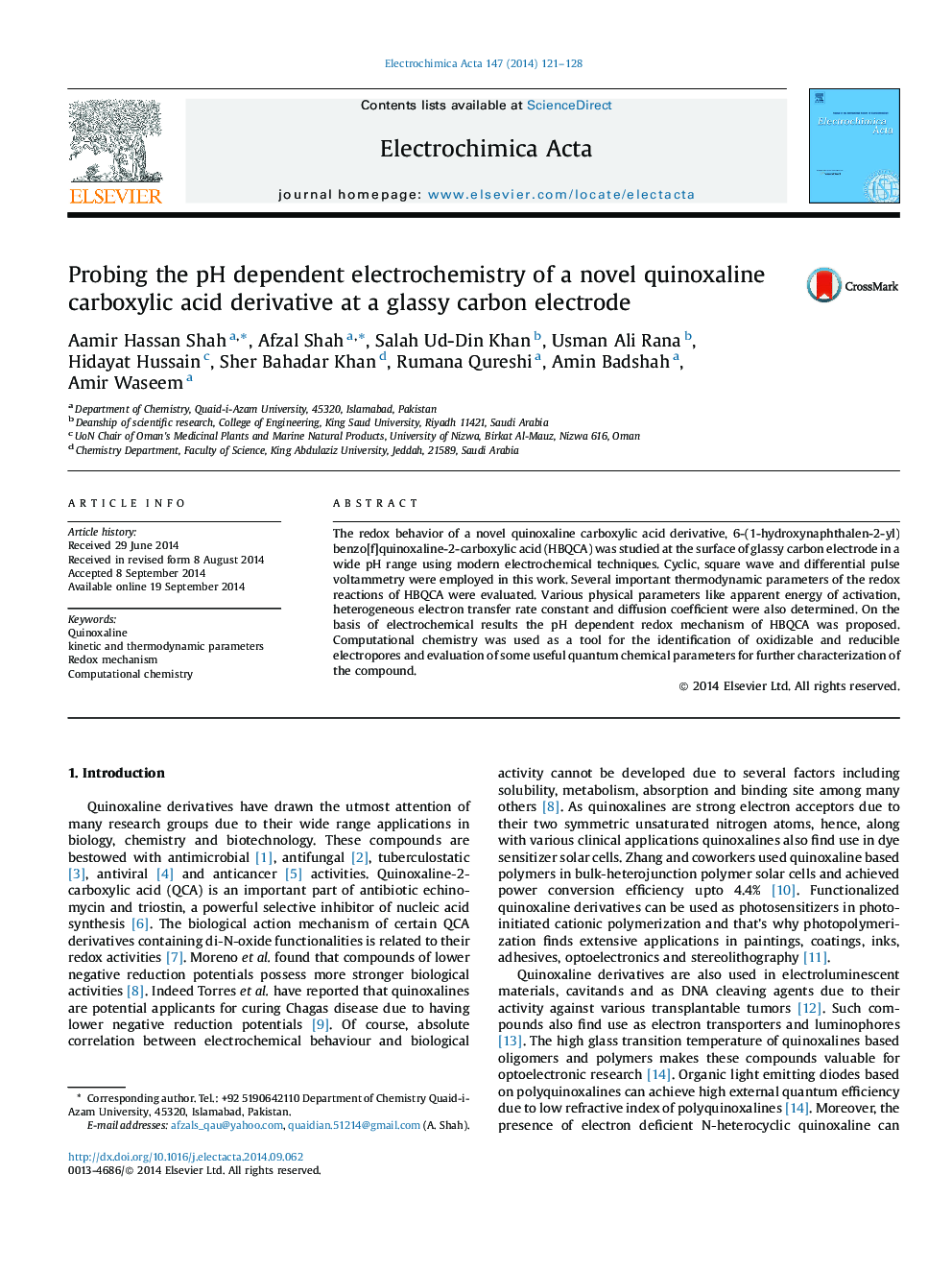| Article ID | Journal | Published Year | Pages | File Type |
|---|---|---|---|---|
| 185044 | Electrochimica Acta | 2014 | 8 Pages |
•We electrochemically characterized HBQCA at a GCE in different pH media•Various kinetic and thermodynamics parameters were evaluated•Redox mechanism was proposed from results obtained from pulse techniques•Geometry optimization was carried out using Gaussian 03 package
The redox behavior of a novel quinoxaline carboxylic acid derivative, 6-(1-hydroxynaphthalen-2-yl) benzo[f]quinoxaline-2-carboxylic acid (HBQCA) was studied at the surface of glassy carbon electrode in a wide pH range using modern electrochemical techniques. Cyclic, square wave and differential pulse voltammetry were employed in this work. Several important thermodynamic parameters of the redox reactions of HBQCA were evaluated. Various physical parameters like apparent energy of activation, heterogeneous electron transfer rate constant and diffusion coefficient were also determined. On the basis of electrochemical results the pH dependent redox mechanism of HBQCA was proposed. Computational chemistry was used as a tool for the identification of oxidizable and reducible electropores and evaluation of some useful quantum chemical parameters for further characterization of the compound.
Graphical abstractFigure optionsDownload full-size imageDownload as PowerPoint slide
